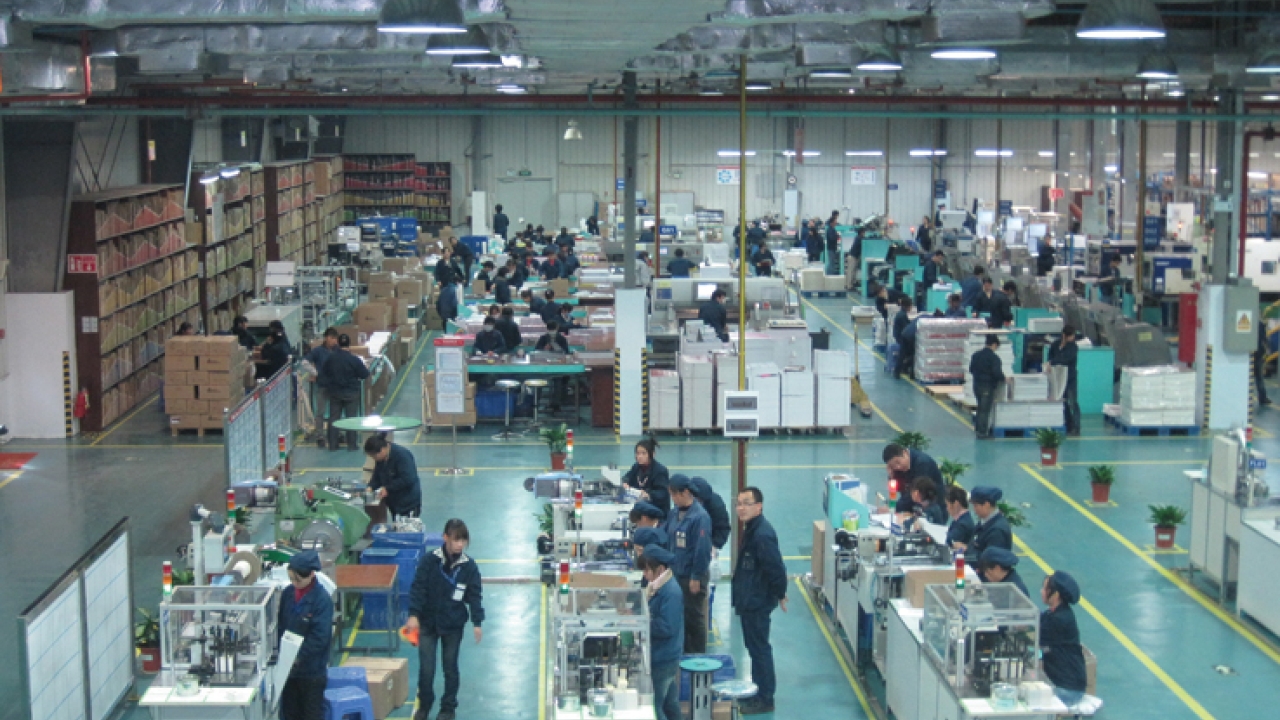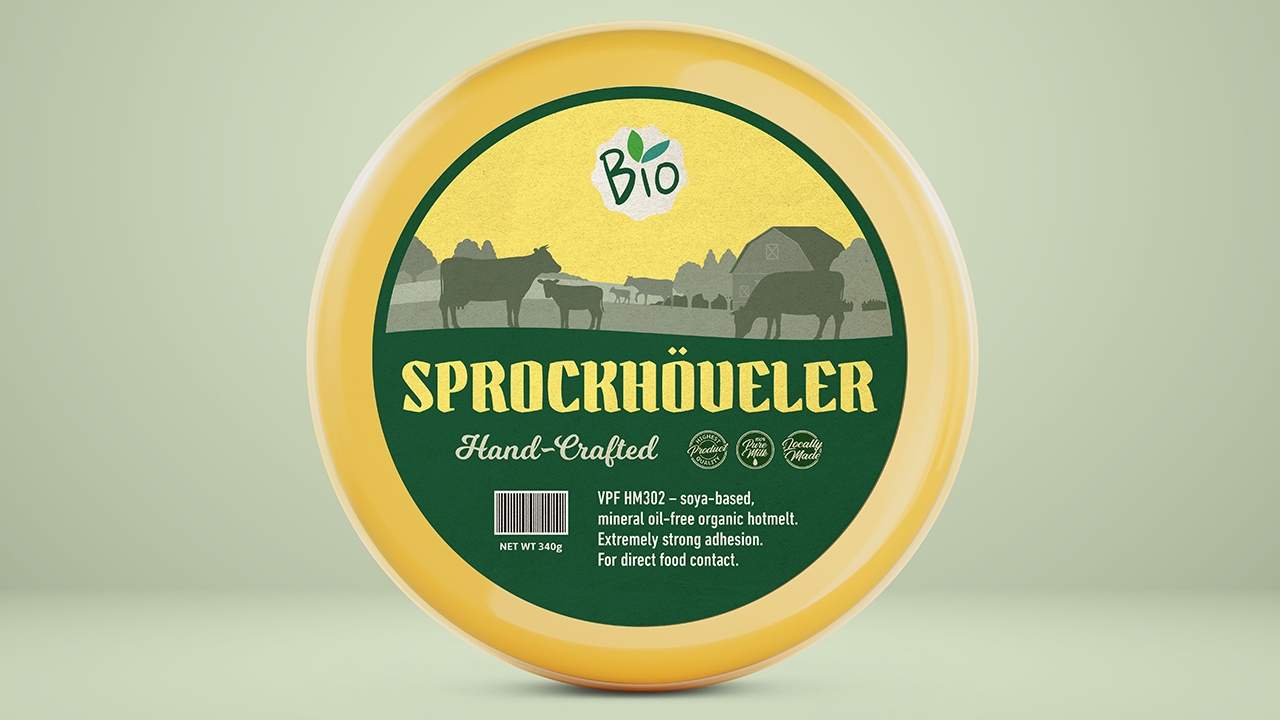Avery Dennison simplifies complex retail branding

L&L North America editor Danielle Jerschefske travels to one of China’s main manufacturing hubs to visit Avery Dennison’s apparel services division
Everyone in the label and packaging industry knows Avery Dennison as the creator of PS label technology and a world leader in the development and distribution of label and packaging materials globally. Yet few realize that Avery Dennison is one of the key global players in the production of labels, tags and full retailing solutions for top US and European retailers, and many of the world’s leading apparel brands, through its Retail Branding and Information Solutions group (RBIS).
International giants like Nike, Zara, Kohl’s, Timberland, Tesco and Calvin Klein require color, quality and service consistency from their suppliers and demand rapid response to serve the world’s growing consumer population.
The global RBIS team effectively manages retail apparel branding needs from design to fulfillment. Its forte is being ‘close to the needle’, providing location-based production in 50 countries with an integrated network of design, manufacturing and technology solutions.
Dean Scarborough, chairman, president and CEO of Avery Dennison, says, ‘We offer retailers and brand owners true end-to-end solutions. Not only do we enhance the brand you see on a label or tag, we also accelerate supply chain performance with pricing and inventory management systems. Our branding and information solutions work together to help our customers satisfy consumers at the "moment of truth" in the retail store.’
Fully servicing its customers to help them catch a consumer’s attention and manage their long, complex supply chains, entails solutions much broader than dependable manufacturing and fulfillment. It requires significant globally integrated information management systems that automate customer data collection and maintenance and streamline production of cohesive variable information barcode price tickets for accurate item level marking.
Deon Stander, RBIS vice president and general manager-Global Commercial explains, ‘Our global infrastructure and proprietary software solutions enable retailers and brand owners to connect directly with garment manufacturers. These solutions allow the manufacturer to print the data in their factory using Avery Dennison hardware and consumables or request an Avery Dennison service bureau ship them. Additionally, the system provides visibility of the garments throughout the supply chain – from factory gate to the store floor.’
The RBIS infrastructure not only allows for rapid response and flexibility, but also provides brand protection through 2D or sequential barcodes, additional anti-counterfeit and covert security features, as well as track and trace capabilities and inventory control.
China
It was agreed that the best way to gain a greater understanding of what RBIS encompasses was by visiting two of Avery’s largest plants in the Nansha and Panyu Districts of the Guangdong Province in southern China, where every product line is manufactured.
The plant in Nansha is the largest hangtag production facility within the group. Opened in 2002 to produce offset, flexographic and thermally printed tags, the plant has tripled in size and now has an extensive platform that includes heat transfer and digital printing capability.
Its 3,000 employees fulfill over 10,000 orders each day, producing more than 60 percent of the total volume output using Heidelberg offset and Arsoma flexographic presses. Retail variables – size, color, style, price – automatically load into a data management system where the information is organized, then sent to pre-press where plates are made, the job is scheduled and sent to press.
Employee interactivity
One of the ways that the Nansha plant manages such volume and complexity with success is because of its employee engagement. There are 1,500 employees in the offset department alone. Senior plant management recognized that workflow would benefit from positive peer interaction. Therefore they initiated a ‘best employee’ peer selection process much like American Idol where associates introduce and market themselves to one another over part of the one hour lunch period.
Kam Yew Chew, Nansha plant operations director, explains, ‘The sessions made employees more comfortable with one another driving Lean success as a unified team. They became more engaged and confident, and participate more actively in Kaizen projects.’
Strict Enterprise Lean Sigma (ELS)
Over the last two years, the Nansha plant underwent a Lean transformation to cut delivery time to its customers in half. Each tier of the workforce from the shop floor on up reviews the plant’s MDI (manage for daily improvement) board before shift-start, looking closely at productivity in hours to best control shift and daily production, and maintain a hit rate, or accuracy, above 90 percent.
Management explains that ELS removes complexity, making daily tasks easier to manage. Says Chew, ‘It gives regular transparency into scheduling what work is completed and what needs to be done, allowing for shifts to be added in order to meet delivery times.’
Finishing and fulfillment are important steps in the production process and an area that has historically required a lot of manual labor, which can slow down the process. Therefore Avery built machines to automate some manual details like adding a grommet and string to a card. The implementation of these machines in the final stages of production increased daily output of particular products from one million to three million.
Quality Control in the shipping department matches hangtags correctly to order and delivery details. This must be exact. Customers must have accurate pricing, size, product and color details. There is no room for error.
This strict adherence to ELS principles and employee dedication gives the plant an average lead time of just over four and a half days with an over 98 percent on–time delivery rate of 35 million tags and labels each day.
‘Our game is responsiveness,’ adds Scarborough. Dropping the lead-time helped customers reduce inventory during the recession and continues to allow more flexible and less costly inventory control.
Flexible platform
Since 2008 the Nansha plant has used HP Indigo 3050 and 5500 sheet fed digital print technology to meet the needs for the more frequent production of more varieties of tags by leading apparel retailers like H&M who supply ‘fast fashion’.
Most recently the location incorporated HP Indigo 4000 series roll fed machines to service the increase in size of the pressure sensitive pant strips desired by its customers, and the need to have both multiple colors and variable information on them.
The Indigos service a piece of offset business that had typically been produced in a two-step process. Scarborough says, ‘We are increasingly producing everything in one pass on the digital presses. The Indigo presses enable us to respond quickly and effectively, especially as order sizes decline. Our utilization of the digital presses is really high. And we see
more opportunity with the technology moving forward.’
Digital print technologies complete a seamless digital solution that lends to short run work, multiple SKUs and a rapid turnaround time. The set up time between each job can typically be done faster without sacrificing quality and the process removes intensive manual steps where human error has significant impact.
The inclusion of digital gives the business ultimate flexibility to effectively serve clients across their POS branding needs. Jobs are scheduled for production depending on the volume and variability, and the inks and embellishments required.
Since the digital machines cannot produce jobs with UV, fluorescent, or metallic inks, this work is automatically scheduled to a conventional press. Likewise, if a job has a large number of sheets with low variability, it is typically more effective to produce on a conventional press. As a general rule, digital is selected for runs of about 700 sheets and below per order. The Heidelberg offset presses run 5000 sheets per hour.
The plant’s total volume produced digitally has more than doubled in the last three years and continues to grow rapidly. Orders processed on the HP Indigos have an average of 200 sheets. More than 400 orders per day are produced on them.
Consistency
The majority of customers order apparel lines from multiple locations, with similar requirements for trim components, garment assembly with labeling, and regional distribution capabilities. Avery Dennison’s RBIS group can provide the same brand image in India, Bangladesh, Turkey, Mexico and China, wherever the apparel is sourced.
No matter which print process is used, RBIS press operators at each location, globally, abide to the same strict processes and regimens for color matching within a reference of 1.5 Delta E. When a job is moved from one process to another, a profile is created and color is signed off on between the two prints.
Ninety percent of jobs printed digitally use 7-color process to re-create any brand colors. While most customers have accepted process colors, spot colors are used in a few instances for large repeat customers. Operations are working with HP to have spot colors pre-mixed since in-house mixing was found to add variability to the process.
Many of the same materials are used in both the conventional and digital machines to further enhance consistency across product lines and regions.
A global Avery Dennison RBIS Creative Services team consisting of designers, R&D engineers, trend and color forecasting experts, support customers in carrying through innovative concepts to outperform the competition at retail.
Sustainability
The RBIS group has a number of locations in every region certified to global environmental standards. The Nansha plant meets environmental requirements with ISO 14001 and FSC chain-of-custody certifications. Under the auspice of Lean, a dedicated management team assessed the plant’s energy consumption rate versus production output on a micro to macro scale, finding opportunity to be more efficient by combining two shifts.
The group developed and launched its Greenprint packaging assessment tool in spring to assist customers in making an informed review of the overall environmental impact of their apparel branding across six measureable categories – fossil material, tree use, water use, energy use, GHG emissions and solid waste. Beginning at the design stage, Greenprint helps brand managers construct a more environmentally friendly apparel branding scheme.
RBIS offers a complete set of eco-products featuring certified papers, water-based inks, and woven labels sourced from recycled PET bottles. And it has recycled content garment fasteners made with a minimum of 88 percent post-consumer plastic bottles and retail clothing hangers.
Smart POS
A number of studies have proven that RFID or smart enabled item level tags and reading systems improve retail inventory control greatly. Stander explained how item level RFID data provides unit level tracking that follows all the way from manufacturing to distribution to the retail store network. At the store level, automating the process relieves sales clerks of the time-consuming manual process, providing inventory accuracy above 99 percent and therefore more dependable product replenishment, so the racks are constantly stocked with every item a buyer could want to purchase.
Scarborough sees RFID as a growth area for this market. He says, ‘Sales increase, employees are happier and the overall in-store experience is taken to another level.’
The RBIS group consolidated five to six steps of the RFID embedded tag manufacturing process to only two to three steps. Cost per unit has come down significantly, making all the value benefits of this logistics solution a modern viable investment for supply chain accuracy and efficiency.
Quality
The plant in the Panyu district is a major producer of woven fabric labels and heat transfer labels servicing the same market sectors as the Nansha products. It’s the epitome of Chinese scale, employing a whopping 4,500 people. (Each company New Year party is hosted in a large stadium, the only facility in the area than can accommodate so many.)
The art department automatically receives pdf artwork files with Pantone color requests from customers. A Hong Kong developed software system evaluates the graphic image of the horizontally and vertically woven yarn and selects the proper yarn to color match the weaving based on the global Avery Dennison RBIS yarn book. Systems are in place to ensure color consistency across the woven apparel labels and the hangtags produced in Nansha.
There are two types of weaving looms for fabric labels: needle looms and board looms. After weaving the labels move to the finishing department for slitting and counting. This area is a key point for Quality Control, ensuring that the cutting and folding of each label is accurate so they’re exactly the size required to fit the clothing application machine. Acute sorting, counting, measuring and weighing occur here. Each step is a security measure so no labels leave the plant to be used in a counterfeit ring.
It has dedicated machines to produce Uniqlo labels, a Japanese clothing chain similar to H&M, but more widely known for superb quality.
Heat Transfer
Art files are prepared and jobs batched together by color and due date to make the most efficient use of the plate material. The silk screen graphics are then transferred onto paper or plastic backings. Next the film and mesh are exposed together and washed out to create the screen. Then the screens run through the press where adhesive is applied and the transfer labels are sent to the controlled humidity drying room.
Pressure, temperature and dwell time are the three things that can most affect the quality of the heat transfer label. A barcode system is used to track the racks in the temperature-controlled rooms to ensure that each set of labels is receiving the proper dwell time. An improper cure will affect the bond quality on clothing.
Most heat transfer labels range from 120-160 degree heat, and pressure is as low as 1.5 kg/cm square for application. A special system is used for stretchy material. RBIS offers seven types of application systems to its customers. Product is regularly tested in the ‘laundry room’ with commercial washing machines. The label must be able to wash 50 times without breaking down.
Lastly finished product runs through a 100 percent inspection process to check logo and graphics accuracy, is guillotine cut and checked again in QC with the near exact system used for woven labels before distribution.
Success in emerging markets
Avery Dennison has found great success as a US-based firm manufacturing in a foreign country both in its RBIS business and on its core business of Label and Packaging Materials for consumer product labeling. Much of the success can be attributed to its valiant execution of ELS principles. Management explains that its employees there are eager and willing to provide the best, and says that the demand for quality product is higher in China than in the US. It has an advantage as a Western company; European and US firms trust its business and ethics.
Says Scarborough, ‘There is a real culture of development here in China. We’ve been able to invest and grow in the Chinese market and we see more opportunity for expansion in our materials businesses as well as Retail Branding and Information Solutions. We are proud of what we’ve already accomplished and feel that with our strong local leadership and dedicated employees we’re well on the way to reaping more success.’
Avery is well positioned with solutions that can serve as the backbone of virtually any global apparel business. ‘We are passionate about our ability to both elevate brands and accelerate their performance,’ Stander adds.
Pictured: Finishing department in Nansha
This article was published in L&L issue 4, 2011
Stay up to date
Subscribe to the free Label News newsletter and receive the latest content every week. We'll never share your email address.


